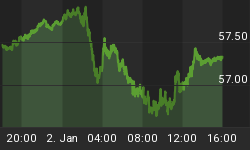How solar cells affected the silver price - and how it didn't...
The Photovoltaic industry didn't start to show on charts of silver demand until the year 2000, when it consumed approximately one million ounces.
Those 31 tonnes were barely a blip on the silver consumption chart. In fact, in comparison to the smallest of the large consumers at the time - which was electronics - it was not even a tenth of their consumption.
Few expected the solar cell industry to become an important player in the silver market for years to come. Indeed, it was not until the year 2008 that the industry reached any volumes of importance, consuming nearly 19 million ounces (590 tonnes). That was barely 2.5% of total fabrication demand according to data from New York's CPM Group.
But what happened in silver's global economy was, in a word, government. Major subsidies were given for the development and promulgation of solar energy by sovereign states. Germany was at first the largest consumer, and was then followed by many other European nations in this objective. But it was not until Washington began to offer subsidies to US energy producers that the silver consumption for these products became of major importance.
The photovoltaic industry in certain countries became very important sectors of the economy. So with the global economic crisis starting five yeares ago, many were to suffer. Spain specifically suffered tremendous economic losses in this industry when the state pulled its subsidies. This has been a major concern for developers and business involved in solar energy.
However, this was at about the same time that the US began to offer subsidies to this industry. So people who sold or produced solar cells were finally poised to make money, now that the world's largest economy was behind it. At this point silver demand for the photovoltaic paste needed to produce solar cells was growing at a rapid pace.
Suddenly the last quarter of 2009, and going into 2010, saw photovoltaic demand for silver explode. Demand rose at a rate of 50% from the year before and would do so again in 2011. At this time the price of silver also began to soar.

Was this new demand the driver of the price of silver? The answer simply put is no. Unfortunately for this industry the timing could not have been worse.
The silver price began to move in leaps at the height of the photovoltaic industry's demand, raising the production costs of their end product. And because the PV industry needed a specific form of 999.9 silver (as opposed the standard 999 parts per thousand fineness in the wholesale market) the amount needed was not readily available. This caused a disruption in the marketplace. In a matter of a few months the silver futures market on the Comex exchange would go into backwardation, with near-term prices rising above prices for delivery further into the future.
Normally, when there is plenty of supply, the future price is higher than the current cash price for immediate delivery. But because of the need for the specific quality, much of the physical bars held on the Comex were being removed in search for the much-needed 999.9 fine silver. One of the largest silver producers in the world - Met-Mex Penoles of Mexico - was known to produce the proper quality bars and had delivered great quantities onto the exchange. So this led to the major withdrawals we saw.
During this time period there were many market commentators speculating that there was a physical shortage of silver. But the truth was there was plenty of 999.0 fine silver in large wholesale bars (typically 1,000 ounces, some 31 kilograms). Shortages of retail bars and coins for the investing public were caused by a bottleneck of fabrication. They were not caused directly by demand for silver by the PV industry.

Because of the coincidence of the price rise and the simultaneous demand from the PV industry, many other commentators attributed rising prices to solar panel demand. But taking a close look, the PV industry's demand only filled a small portion of the drop in demand from the silver market's traditional monster, which was photographic demand.
Silver mining producers were quite happy that the PV industry had entered the marketplace. Even though, for the foreseeable future, it does not look like they will be able to reach the capacity of consumption at which the once powerful photographic film producers had reached. But even though the PV industry is quite young, it has already been looking to thrift or replace the precious metal's use in production as much as possible because of the price rise in silver.
At the height of the solar industry's consumption in 2011, its demand had barely reached 19% of the height of the consumption of the photographic film industry in the year 2000. Add the problem of reduced government subsidies, and it will take quite some time for this industry to become the monster consumer the silver producers were looking for.
Silver has many industrial uses and its properties lend itself to constant new discoveries. With lower prices, consumption of silver for industrial purposes will remain stable or begin to rise. But higher prices at times are a detractor for the use of this metal.
Bottom line? The fundamentals of silver industrial demand, though important, are not what has been the principal driver of the price in the last 10 years. It has instead been the investment community that has truly filled the gap left by the departure of demand from the film industry, as we'll see in the third and last installment of this series. There we will cover who the major silver consumers are today, and what the future looks like it may bring.
















